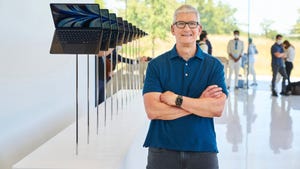
BERLIN -- Broadband World Forum 2018 -- Telefónica Deutschland plans to challenge Germany's incumbent broadband operators with the launch of a 5G-based service, and it reckons the technology could eventually be used to serve up to a quarter of the country's population.
The operator last month announced it was carrying out trials of 5G as a fixed wireless access (FWA) technology in partnership with South Korea's Samsung Electronics Co. Ltd. (Korea: SEC). In an update on those plans at today's Broadband World Forum (BBWF) in Berlin, Cayetano Carbajo, the company's chief technology officer, said a final decision about a mass market deployment would be taken at the end of January.
The 5G standard could play a major role in Germany's broadband market because the penetration of full-fiber networks is currently just 2%, according to Carbajo. Based on population density, Telefónica has calculated that 5G could be economically deployed for about 25% of people -- or roughly 10 million properties -- using very high frequency "millimeter wave" spectrum bands.
"We are making plans and calculations for a deployment of fixed wireless," Carbajo said at the BBWF. "There will be many things to solve, but we see this as an opportunity."
While Deutsche Telekom AG (NYSE: DT) and Germany's cable operators have been investing in cable and fiber-based broadband technologies, Germany currently lacks the "gigabit" networks that have taken shape in southern European markets like Portugal and Spain.
Deutsche Telekom, the former state-owned monopoly, has frequently drawn attention to the cost and regulatory challenges of building all-fiber networks in Germany. However, it has recently teamed up with local authorities and other private sector companies on fiber rollouts in some municipalities, and this month said it would connect around 2 million households annually to all-fiber networks starting in 2020 or 2021. (See Deutsche Telekom targets 99% 5G coverage in Germany by 2025 and DT Seeks Fiber Allies to Tackle Germany's Gigabit Lag.)
That could still leave a big opportunity for Telefónica Deutschland GmbH in the medium term if it can make the business case stack up and prove that 5G is effective as a residential broadband technology.
Carbajo is currently working on plans for connecting small cells to "backhaul" fiber lines providing connectivity between basestations and the core network. His goal is to ensure all mobile sites have fiber connectivity by 2025.
Want to know more about 5G? Check out our dedicated 5G content channel here on
Light Reading.
Telefónica has signed fiber access agreements with both Deutsche Telekom and Vodafone, which owns Germany's largest cable network. Under the wholesale deal with Deutsche Telekom, the German incumbent will provide fiber connectivity for around 5,000 mobile sites. (See Eurobites: Telefónica, Deutsche Telekom Extend Backhaul Deal in Germany.)
Ahead of a German 5G spectrum auction, and amid concern about the exorbitant sums recently spent on 5G spectrum licenses in Italy, access to frequencies is another concern for Telefónica. (See Italy's $7.6B 5G bonanza puts telcos on the rack.)
For a broadband deployment, the operator's main interest is in the 26GHz band, simply because the higher the spectrum range, the faster the connection. The trade-off is that signals do not travel as far or penetrate buildings as effectively in these higher ranges, but Carbajo thinks outdoor antennas at customer premises should address this problem. Samsung appears to be developing these devices.
While lower frequencies could be used to cover a higher percentage of the population, Carbajo doubts that as many people would take advantage of what would inevitably be a lower-speed service.
He is determined to complete the virtualization of the operator's core network before any 5G service is launched. "If you start later you will face operational challenges," he said.
Trials with Samsung are currently underway in Hamburg, where Telefónica is running 5G connections over 26GHz spectrum for 20 households.
— Iain Morris, International Editor, Light Reading
Read more about:
EuropeAbout the Author(s)
You May Also Like












